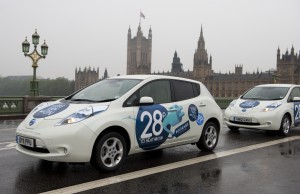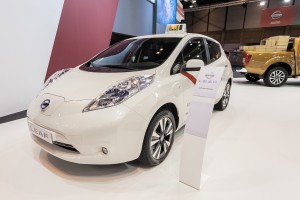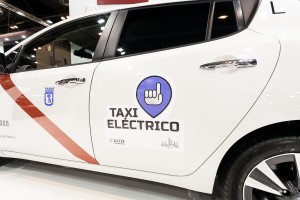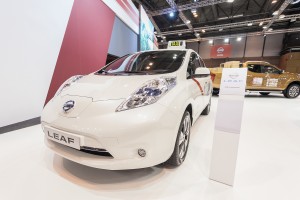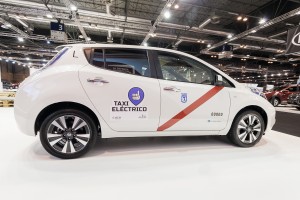THE UK was Nissan’s biggest market for worldwide electric taxi sales in the previous financial year, with 78 of the company’s zero-emission models (LEAF and e-NV200) delivered to taxi firms around the country.
Europe was the top continent for all-electric taxi take-up, accounting for 48% of worldwide sales in the 2015 financial year. Globally, electric taxi sales increased 34% over the previous fiscal period, but in Europe the market saw a 66% volume increase from 426 to 709.
Leading the charge in the current financial year, Nissan and La Ciudad del Taxi have just announced the world’s largest 100 percent electric taxi fleet deal that will see 110 Nissan LEAF 30 kWh providing zero emission taxi services in Madrid, Spain.
The electric taxi market in Europe is growing quickly as taxi operators switch on to the benefits of zero emission mobility. Nissan has sold almost 800 electric vehicles (LEAF and e-NV200) to taxi owners and operators across Europe.
In January this year, six of the largest and longest-established Nissan taxi fleets the UK – Phoenix Taxis in Blyth, Northumberland, C&C Taxis in Cornwall, Premier Cabs in Blackpool, 203020 Electric in Dundee, eConnect Cars in London and eCorporate Travel in Edinburgh –surpassed three million miles between them, saving the firms a collective £290,000 in average running costs.
Gareth Dunsmore, Head of Electric Vehicles, Nissan Europe said: “Cities across the globe are facing huge challenges in terms of poor air quality and increasing greenhouse emissions. Adding zero emission vehicles such as the Nissan LEAF to taxi services operating in major cities is a vital step to tackling these challenges head on.”
The Nissan LEAF is the best-selling EV in the world with more than 220,000 units sold globally. The new LEAF 30 kWh offers a range of up to 155miles on a single charge, making it an ideal taxi vehicle, with its size, comfort and performance all well-suited to urban environments. In addition to its zero emission benefits, the Nissan LEAF also offers running costs four times cheaper than that of a conventional combustion engine and up to 40 percent savings in maintenance costs.



